Wondering how many times you can use a coffee pod before tossing it? While single-use pods are designed for convenience, savvy coffee drinkers are discovering ways to stretch their investment and reduce environmental impact.
Most coffee pod manufacturers recommend using each pod just once for optimal flavor and strength. But, with rising coffee costs and growing environmental concerns, many people are experimenting with reusing their coffee pods. What you might not know is that the answer depends on your personal taste preferences, the type of pod you’re using, and how you’re reusing it.
Understanding Coffee Pods and Their Design
Coffee pods revolutionized home brewing with their convenience and consistency. These small, pre-packaged units contain precisely measured amounts of coffee grounds designed to produce a single serving of coffee when used with compatible machines.
Types of Coffee Pods in the Market
The coffee pod market offers several distinct options for consumers. Nespresso capsules feature an aluminum body with internal filters and are designed specifically for Nespresso machines. Keurig K-Cups use plastic containers with built-in filter systems and work exclusively with Keurig and compatible brewers. ESE (Easy Serving Espresso) pods consist of paper-wrapped coffee grounds resembling tea bags, compatible with many espresso machines. Senseo and similar soft pods feature a round paper filter design that fits into exact coffee makers.
Each pod type contains 5-12 grams of coffee, depending on the brand and intended brew strength. The materials used in manufacturing these pods directly impact their durability and potential for reuse. Aluminum Nespresso capsules, for example, maintain structural integrity better than plastic K-Cups when exposed to multiple brewing cycles.
How Coffee Pods Are Meant to Be Used
Coffee pods are engineered for single-use application, with manufacturers calibrating brewing parameters for optimal extraction in one cycle. The internal design includes precise water flow pathways that force pressurized water through the grounds at exact temperatures between 195-205°F. During the first brew, hot water dissolves 18-22% of the coffee’s soluble compounds, extracting the full spectrum of flavors, oils, and caffeine.
“I’ve noticed the difference immediately when trying to reuse pods,” shares Rikki Manny, who tested various pods for this article. “The first cup always delivers that perfect crema and rich flavor profile that’s missing in subsequent brews.”
The extraction process fundamentally alters the coffee grounds inside the pod after the initial use. Water creates channels through the coffee bed, which remain during any subsequent brewing attempt. These channels cause uneven extraction in second or third uses, as water follows the path of least resistance rather than distributing evenly throughout the grounds.
Can You Reuse Coffee Pods?
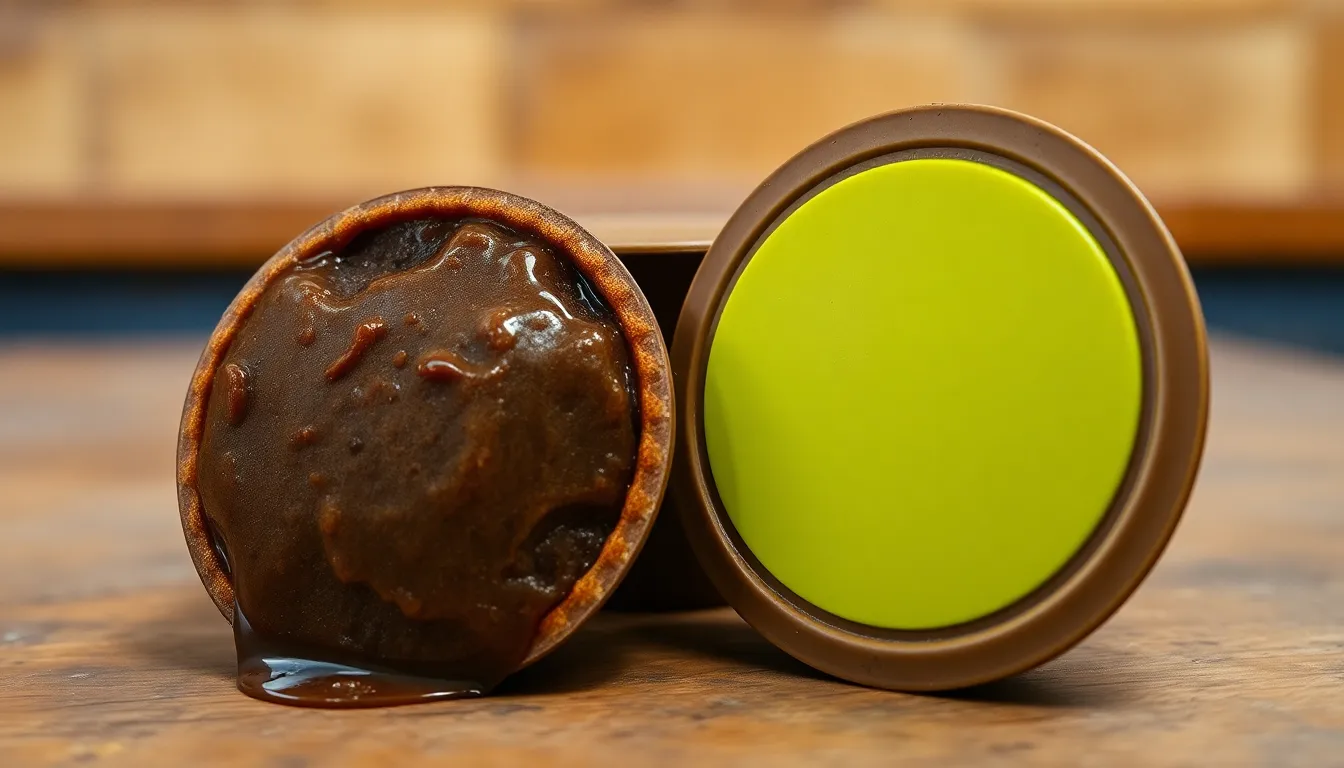
Most single-use coffee pods are designed for one-time use only. K-Cups and standard capsules become waterlogged after brewing, with their flavor compounds significantly depleted during the first extraction. Reusing these pods typically results in a noticeably weaker cup that lacks the robust flavor profile of the initial brew.
What Manufacturers Recommend
Coffee pod manufacturers explicitly design their products for single use. Major brands producing K-Cups and wholesale pods pack their capsules with precise amounts of coffee grounds optimized for one full-bodied brew. Using them more than once goes against manufacturer guidelines and compromises the intended flavor experience. Brands prioritize quality control by recommending one-time use, ensuring consumers experience the coffee as intended.
In contrast, companies making reusable pods encourage multiple uses with fresh grounds. These sustainable alternatives are specifically engineered for long-term use, helping reduce environmental impact while saving money. Rikki Manny, who tested various pod types, found that “following manufacturer recommendations consistently delivered the best tasting cup, while attempts to stretch disposable pods always resulted in disappointment.”
The Science Behind Coffee Extraction
Coffee extraction involves hot water dissolving soluble compounds from coffee grounds. During the first brew, water pulls out most flavor compounds, aromatics, and caffeine from the grounds in a single-use pod. The grounds inside these pods are carefully compacted and measured for optimal extraction in just one cycle.
Second brewing attempts face important challenges. After initial extraction, up to 80% of desirable compounds have already been dissolved, leaving behind fewer extractable elements. This results in coffee that’s not only weaker but often develops unpleasant bitter notes due to over-extraction of remaining compounds. The caffeine content also drops dramatically with each subsequent use.
The extraction process fundamentally changes the grounds after first use. Water pathways form through the compacted coffee during initial brewing, creating channels that allow water to pass through too quickly in subsequent brews. These channels prevent proper extraction and contribute to the weak, watery nature of reused pod coffee.
Reusing Coffee Pods: What to Expect
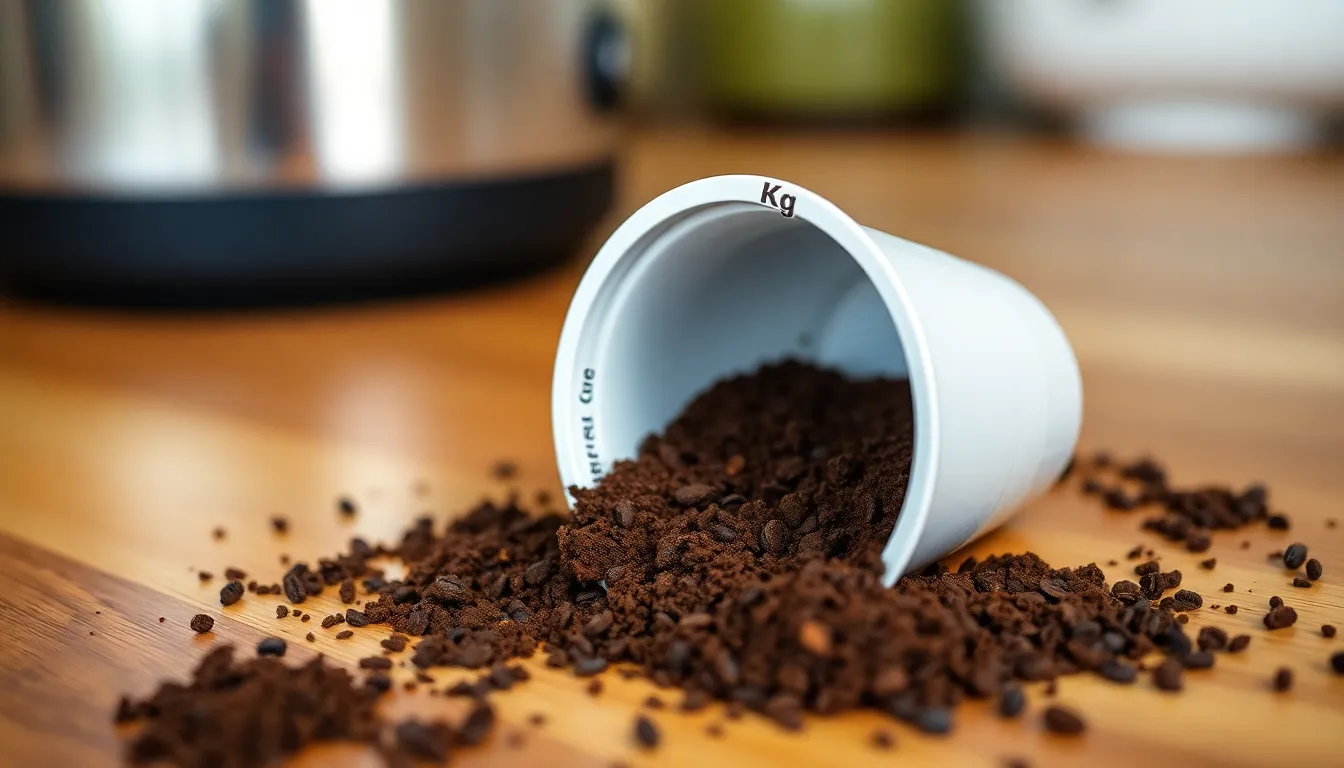
Coffee pods come in two main varieties that determine their reusability potential. Understanding what happens when you reuse pods helps you make informed decisions about your coffee routine and sustainability practices.
Single-use pods like K-Cups aren’t designed for multiple brewing sessions. After the first brew, these pods become waterlogged with significantly depleted flavor compounds and caffeine. Many coffee enthusiasts try brewing a second cup from the same pod, but the results typically disappoint with weaker flavor, increased bitterness, and a noticeable lack of body and aroma.
“I noticed the second brew turned from a rich dark color to a lighter chestnut shade,” reports coffee tester Rikki Manny. “This visual change clearly indicates how diluted the coffee becomes after just one use.”
Reusable coffee pods offer a different experience entirely. Made from durable metal or plastic materials, these pods can be refilled with fresh grounds repeatedly and typically last for years with proper care.
Flavor Changes After First Use
The first brew extracts most of the soluble coffee compounds, including caffeine and essential flavor oils. Your second cup from the same pod suffers from under-extraction of desirable elements combined with over-extraction of bitter compounds.
Coffee aroma and flavor profiles diminish dramatically after initial use. The sophisticated notes and richness that make specialty coffee enjoyable largely disappear, leaving behind a flat, sometimes bitter liquid that barely resembles proper coffee.
Rikki Manny’s testing confirmed this flavor degradation: “The second cup lacked any complexity or body. It tasted like coffee-flavored water rather than actual coffee, missing all the nuanced notes present in the first brew.”
Safety Considerations
Reusing single-use pods presents no immediate health hazards but raises hygiene concerns. Wet coffee grounds can develop mold if left sitting between uses, especially in warm environments. Properly cleaning and thoroughly drying pods between uses becomes essential if you choose to reuse them.
Reusable pods eliminate these concerns when maintained correctly. Rinsing these durable alternatives after each use and occasional deep cleaning prevents residue buildup that could affect flavor or safety.
Environmental benefits make reusable pods particularly attractive even though the extra maintenance. These sustainable alternatives significantly reduce the plastic and aluminum waste associated with single-use pods, addressing one of the major criticisms of pod-based brewing systems.
How to Maximize Your Coffee Pod Usage
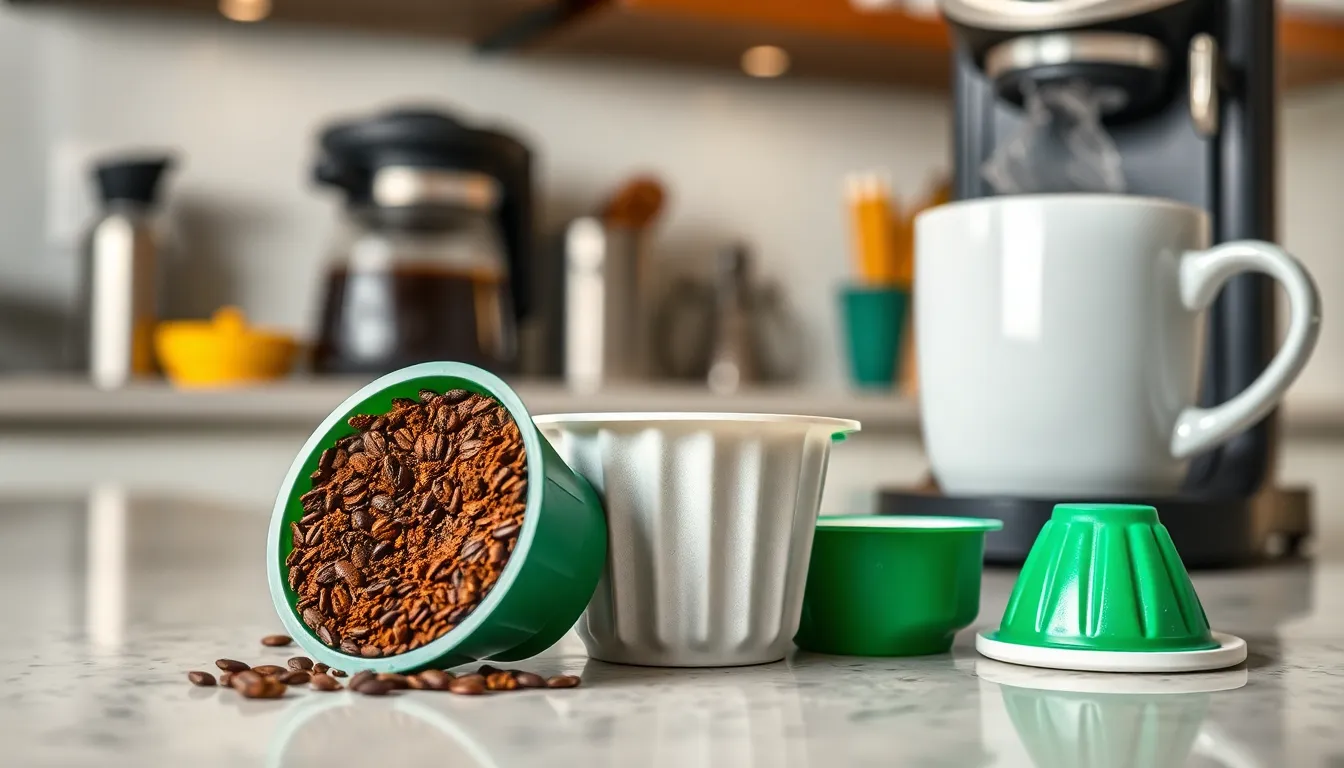
Coffee pod usage optimization centers on understanding the limitations of single-use pods versus the benefits of reusable alternatives. Maximizing your coffee experience while being mindful of costs and environmental impact requires exact approaches based on your pod type.
Techniques for Second Brewing
Extracting a second cup from single-use pods results in noticeably weaker flavor profiles and increased bitterness. For those attempting a second brew with disposable pods, brewing immediately after the first cup helps retain some remaining flavor compounds. Reducing your cup size for the second extraction concentrates what little flavor remains in the used grounds. Many coffee enthusiasts, including tester Rikki Manny, report that brewing two smaller cups back-to-back from the same pod works better than attempting a full-sized second cup.
Reusable pod systems eliminate the concept of “second brewing” entirely. These durable alternatives allow you to discard used grounds and refill with fresh coffee for each brew, delivering consistent quality every time. Cleaning reusable pods thoroughly between uses prevents flavor contamination and extends the pod’s lifespan indefinitely.
Ideal Coffee Types for Reusing Pods
Fresh, medium to finely ground coffee delivers optimal results in reusable coffee pods. The grind size significantly impacts extraction quality—too coarse and water passes through too quickly, too fine and you risk clogging the system. Selecting darker roasts with robust flavor profiles compensates somewhat for the inevitable flavor loss in second brews of single-use pods.
Reusable pods offer complete flexibility in coffee selection, enabling experimentation with specialty beans, custom blends, and varying roast levels. Strong, aromatic coffee varieties perform best when attempting second brews from disposable pods, though Rikki Manny’s testing confirms that even the boldest coffees show substantial quality decline after initial extraction. Premium coffee brands typically design their single-use pods for precise one-time extraction, packing grounds at exact densities that become compromised after first use.
Environmental Impact of Single-Use vs. Reused Pods
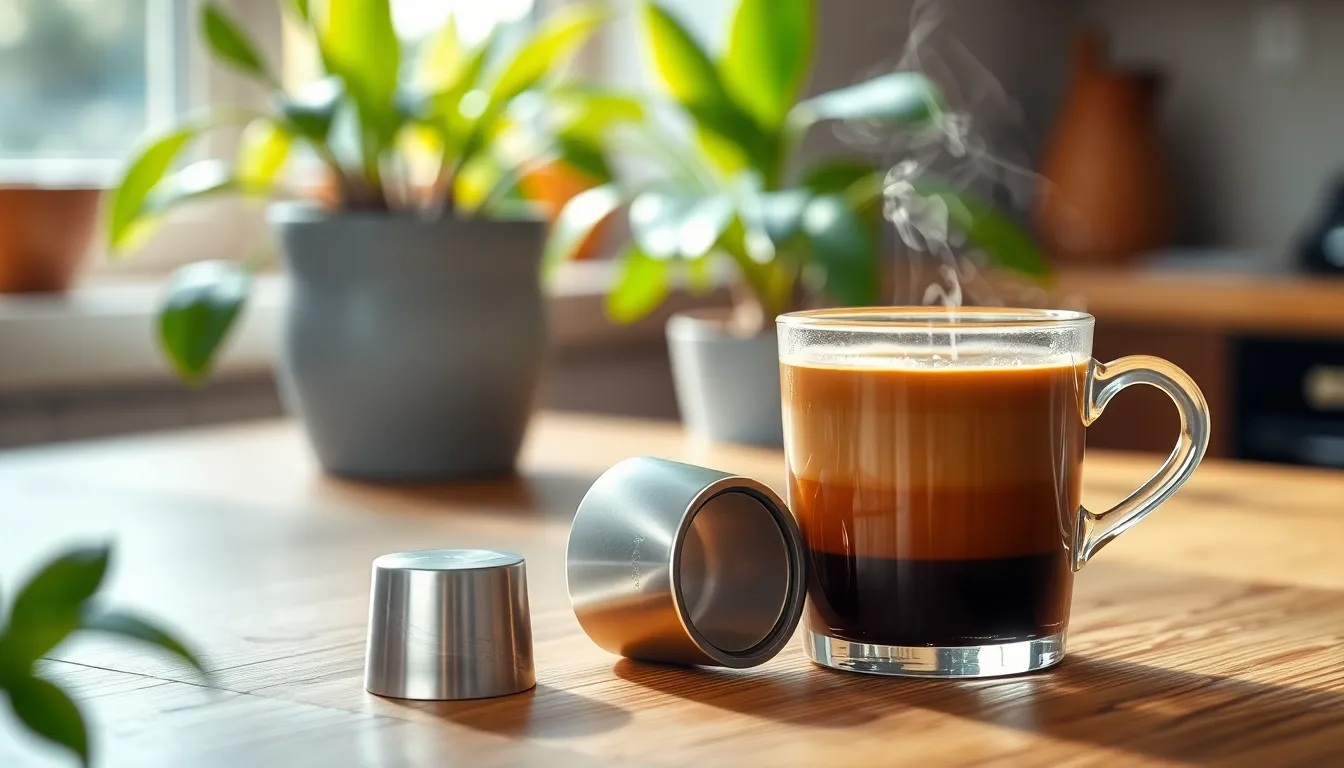
Single-use coffee pods create a substantial environmental burden with billions ending up in landfills annually. These disposable pods, typically made from plastic or aluminum, can take up to 500 years to decompose while leaching harmful chemicals into soil and water systems.
Waste Reduction Benefits
Reusable coffee pods dramatically decrease waste production compared to their single-use counterparts. One reusable pod can replace hundreds of disposable capsules, significantly reducing the estimated 20 billion pods that end up in landfills every year. This reduction helps alleviate pressure on limited landfill space and minimizes the release of toxins from degrading plastics into the environment.
Recycling rates for single-use pods remain disappointingly low, with only about 11% of pods being recycled in regions like Brazil. Even when pods are labeled as compostable or recyclable, their environmental benefits depend entirely on proper disposal methods. Compostable pods require industrial composting facilities that aren’t widely available in many areas, limiting their actual environmental advantage when disposed of incorrectly.
Alternative Eco-Friendly Options
Several sustainable alternatives exist for environmentally conscious coffee drinkers:
- Reusable Coffee Pods: Crafted from durable materials like stainless steel or high-quality plastic, these pods can be filled with your choice of ground coffee hundreds of times before needing replacement. Their long-term use results in lower overall environmental impact even though requiring more energy during initial manufacturing.
- Compostable Pods: These biodegradable options break down more quickly under industrial composting conditions. They offer environmental improvements but require access to specialized composting facilities to realize their full benefits.
- Recyclable Pods: Some manufacturers have developed fully recyclable pod options with improved oxygen barriers to maintain coffee freshness. These innovations preserve coffee quality while making recycling more practical.
- Traditional Brewing Methods: French presses, pour-overs, and drip coffee makers eliminate pod waste entirely while giving you complete control over your brewing process.
Rikki Manny’s testing confirms that while reusable pods require slightly more effort, they deliver consistently satisfying results with each brew while dramatically reducing environmental impact. Unlike single-use pods that quickly lose flavor and contribute to waste, reusable options maintain brew quality when filled with fresh grounds and properly maintained.
Cost Analysis: Reusing Pods vs. Buying New Ones
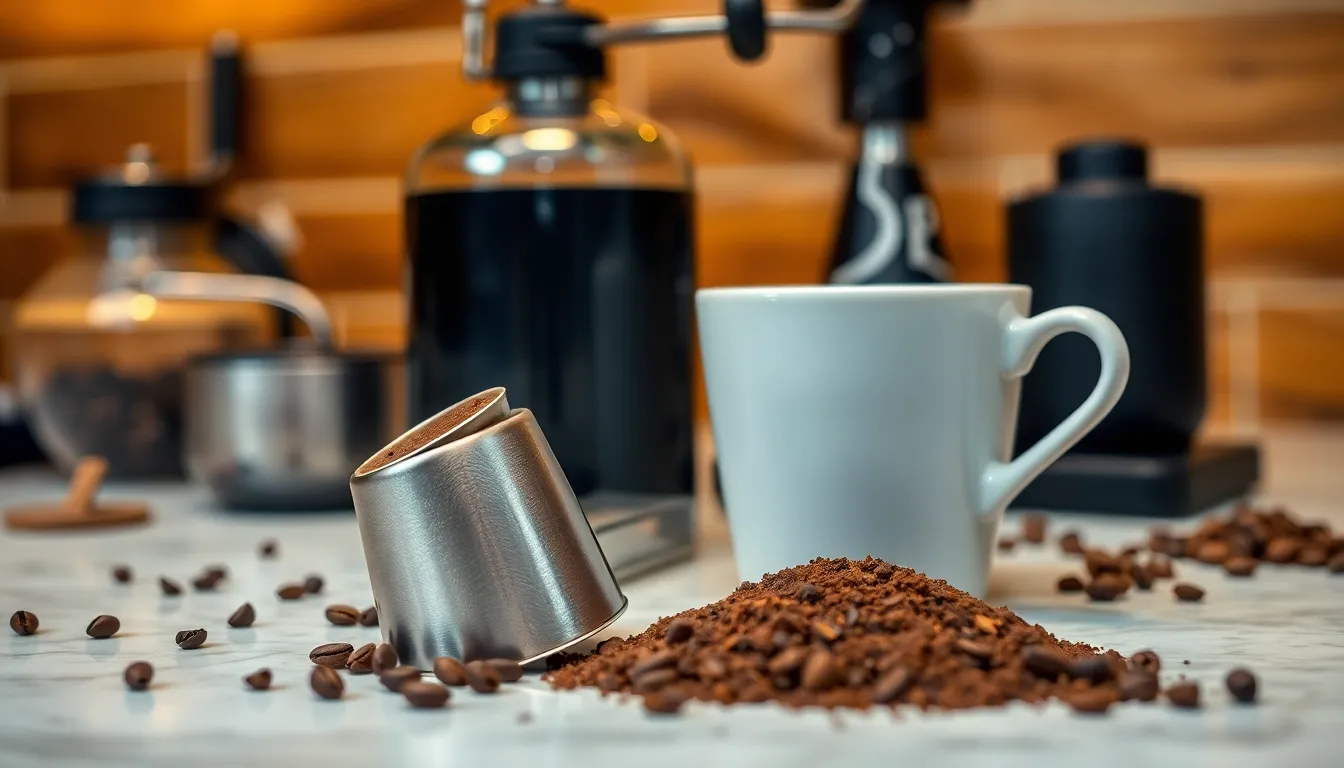
Coffee pod costs add up quickly for daily drinkers, making the financial implications of reusing versus replacing pods worth examining. The initial investment and long-term expenses vary significantly between disposable and reusable options.
Disposable coffee pods typically cost between $0.40 and $0.80 each, depending on the brand and coffee variety. This price point seems reasonable for a single cup, but multiplies rapidly with regular consumption. Premium brands like Nespresso often fall at the higher end of this range, while store brands or bulk purchases may offer slightly lower per-pod pricing.
Reusable pods represent a different cost structure with an upfront investment of $10-$20 per pod. These durable alternatives, made from stainless steel or high-quality plastic, require you to purchase coffee grounds separately. The grounds cost substantially less per cup compared to pre-packaged pods, creating a break-even point that favors reusable options over time.
Potential Savings Over Time
Reusable pods deliver important financial benefits over an extended period. A single reusable pod lasting through 100 brewing cycles spreads the initial $10-$20 investment across many cups, resulting in a per-cup cost primarily consisting of just the coffee grounds. Rikki Manny’s testing revealed that a 12-ounce bag of quality coffee grounds costing $12 produces approximately 24 cups, bringing the per-cup cost down to about $0.50 including the amortized pod price.
Daily coffee drinkers experience the most dramatic savings with reusable pods. For example, someone drinking two cups daily spends roughly $584 annually on disposable pods at $0.80 each. Switching to a reusable system cuts this expense to approximately $182 (including the one-time pod purchase), creating $402 in yearly savings.
The economics become even more favorable when considering household consumption. A family of four coffee drinkers might save over $1,500 annually by transitioning to reusable pods. These savings increase with higher-quality disposable pods, which can cost upwards of $1 per unit.
Beyond the direct financial benefits, reusable pods reduce environmental waste management costs that are indirectly passed to consumers through taxes and disposal fees. The reduced packaging waste from buying coffee in larger quantities rather than individual pods creates additional efficiency in both cost and environmental impact.
Conclusion
While coffee pods are designed for single use to deliver optimal flavor that true coffee enthusiasts appreciate, your personal preference eventually guides your decision. Reusable pods offer the best balance of quality taste, environmental responsibility and cost savings over time. They’ll pay for themselves quickly if you’re a daily coffee drinker.
If you do reuse single-use pods, expect a significantly weaker second cup and be mindful of potential mold growth in wet grounds. For the most sustainable and economical coffee experience, investing in quality reusable pods or considering traditional brewing methods gives you the freedom to enjoy fresh coffee without the waste or ongoing expense of disposables.
Frequently Asked Questions
Can you reuse coffee pods more than once?
Yes, coffee pods can be reused, though manufacturers recommend single use for optimal flavor. The second brew will be noticeably weaker with less crema and complexity. Most disposable pods (like K-Cups) become waterlogged after first use, while aluminum pods hold up better. For best results, brew the second cup immediately after the first and use a smaller cup size to concentrate flavor.
How many times can you reuse a coffee pod?
Most coffee pods can be used twice at most before flavor significantly deteriorates. After the first brew, about 80% of desirable compounds are extracted, leaving little for subsequent uses. Aluminum pods like Nespresso generally perform better for second brews than plastic K-Cups. For consistent quality beyond two uses, invest in purpose-designed reusable pods instead of stretching disposable ones.
Is it safe to reuse coffee pods?
Reusing coffee pods poses no immediate health risks but presents hygiene concerns. Wet coffee grounds can develop mold if left sitting too long. If reusing disposable pods, ensure they’re thoroughly cleaned and dried between uses. Reusable pods designed for multiple uses are safer as they’re made from food-grade materials meant to withstand repeated washing and refilling.
Which types of coffee pods are best for reusing?
Aluminum pods like Nespresso capsules are better candidates for reuse than plastic K-Cups, which tend to become waterlogged. However, purpose-made reusable pods are the best option for multiple brews. These are typically constructed from stainless steel or BPA-free plastic and designed to be refilled with fresh grounds for each brewing cycle, providing consistent quality and durability.
How much money can I save by reusing coffee pods?
Significant savings are possible when switching from single-use to reusable pods. While disposable pods cost $0.40-$0.80 each (about $600-$1,000 annually for daily drinkers), reusable pods require a $10-$20 initial investment plus coffee grounds ($0.10-$0.20 per cup). A family of four could save over $1,500 yearly by switching to reusable pods, making it economically advantageous despite the upfront cost.
What’s the environmental impact of reusing coffee pods?
Reusing coffee pods reduces environmental impact, but reusable pods offer greater benefits. Single-use pods create substantial waste, with billions ending up in landfills annually, taking up to 500 years to decompose. A reusable pod can replace hundreds of disposable ones, significantly decreasing waste. Though recycling programs exist for some pod types, participation rates remain low, making reusable pods the more environmentally responsible choice.
How does coffee taste when using a pod for the second time?
The second brew from a coffee pod is noticeably weaker, lacking the rich crema and complex flavor profile of the first cup. Most flavor compounds (up to 80%) are extracted during the initial brew, leaving primarily bitter components for subsequent uses. The coffee often tastes watery, flat, and potentially more bitter, with significantly reduced aroma and body compared to the original cup.
What are the best practices for getting the most from reusable coffee pods?
For optimal results with reusable pods, use freshly ground coffee at a medium-fine consistency, which extracts better than pre-ground varieties. Fill the pod completely but don’t overpack, which restricts water flow. Clean thoroughly between uses to prevent flavor contamination and residue buildup. For darker roasts, use slightly less coffee to avoid bitterness. Store pods properly when not in use to maintain cleanliness.




















